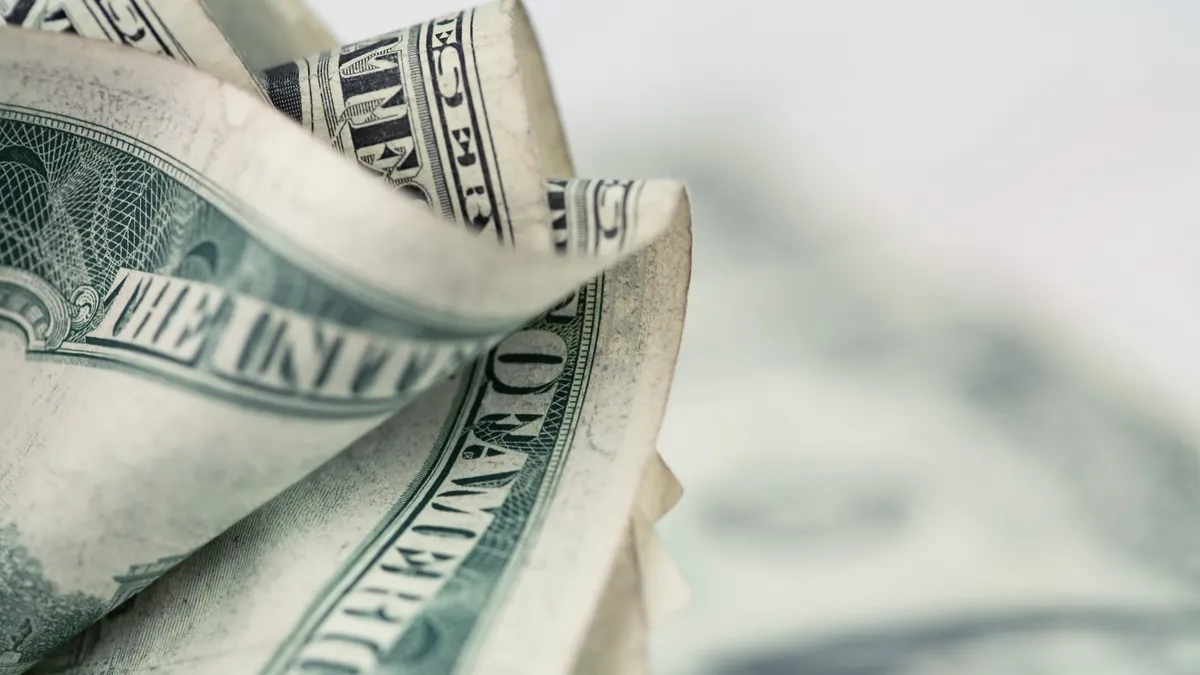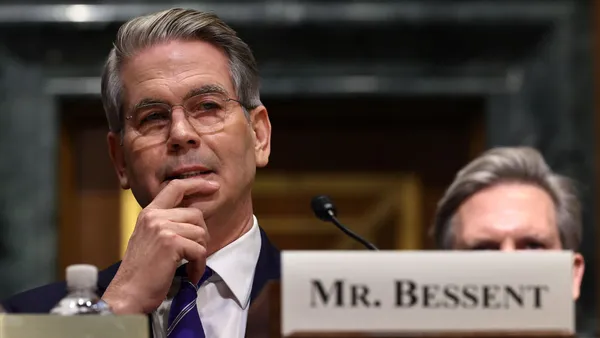Dive Brief:
- The Federal Reserve’s preferred gauge of inflation was little changed in December, meeting the expectations of policymakers and affirming their recent decision to hold the benchmark interest rate steady.
- The core personal consumption expenditures price index, excluding volatile food and energy prices, rose 0.2% from November and 2.8% over the full year, the Bureau of Economic Analysis said Friday. The gain — exceeding the central bank’s 2% target — matched a forecast by Fed Chair Jerome Powell.
- “Core inflation remains elevated, but my expectation is that it will moderate further this year,” Fed Governor Michelle Bowman said in a speech Friday. “I continue to see upside risks to inflation,” she said, calling for “a cautious and gradual approach to adjusting policy.”
Dive Insight:
Fed policymakers, noting solid economic growth and above-target inflation, unanimously decided on Wednesday to keep the federal funds rate at a range between 4.25% and 4.5%.
The pause followed three consecutive cuts last year that reduced the main interest rate by a full percentage point.
Powell at a post-decision press conference repeatedly said that the central bank is in no hurry to resume a reduction in borrowing costs. Bowman also voiced a preference for patience.
“I would like to see progress in lowering inflation resume before we make further adjustments to the target range,” Bowman said. “We need to keep inflation in focus while the labor market appears to be in balance and the unemployment rate continues to be at historically low levels.”
Geopolitical tensions may push up price pressures, she said.
“Global supply chains continue to be susceptible to disruptions, which could result in inflationary effects on food, energy and other commodity markets,” Bowman said.
Also, “the release of pent-up demand following the election, especially with improving consumer and business sentiment, could lead to stronger economic activity, which could increase inflationary pressures,” according to Bowman.
Indeed, gross domestic product growth will probably accelerate to a 2.9% annual pace during the current quarter, the Atlanta Fed forecast on Friday.
The economy last quarter expanded at a 2.3% annual rate, fueled largely by robust consumer spending, the Commerce Department reported Thursday.
Several factors will likely spur stronger growth and push up price pressures in coming months, Torsten Sløk, chief economist at Apollo Global Management, said in an email Friday.
“The strong momentum in the economy is driven by high stock prices, high home prices and strong tailwinds to growth from tech capex spending, defense spending and spending driven by the CHIPS Act, the IRA [Inflation Reduction Act] and the Infrastructure Act,” Sløk said.
“Combined with low jobless claims and higher animal spirits since the election, the bottom line is that the US economy is entering 2025 with accelerating momentum,” he said, adding “the narrative that the economy is slowing and inflation is moving down to 2% is wrong.”
The Fed paused monetary easing, and is not committed to a pre-set course on borrowing costs, in part because of the uncertain economic impact of policy shifts by the Trump administration, Powell said on Wednesday.
“We don’t know what will happen with tariffs, with immigration, with fiscal policy and with regulatory policy,” Powell said. “We need to let those policies be articulated before we can even begin to make a plausible assessment of what their implications for the economy will be,” he said.














